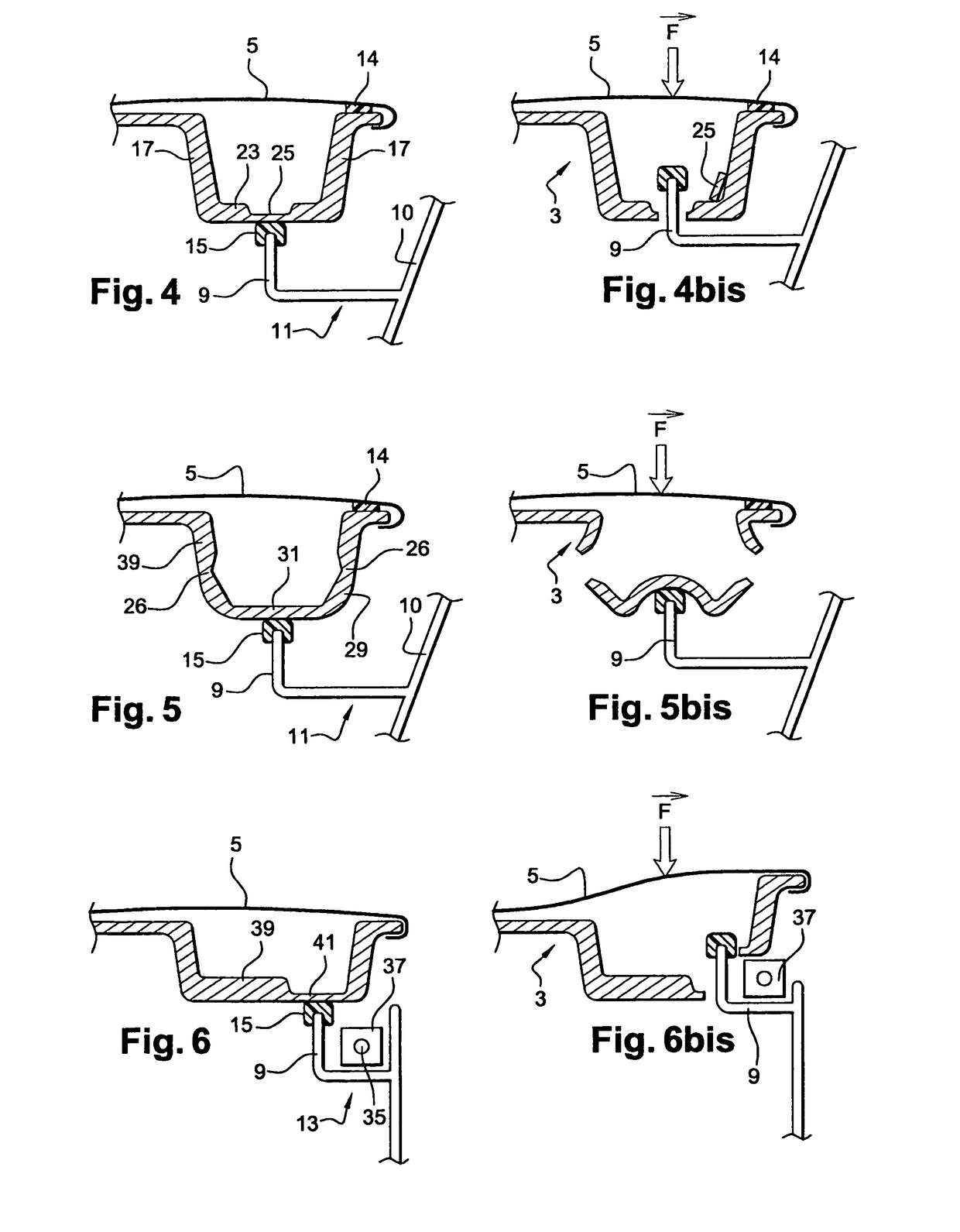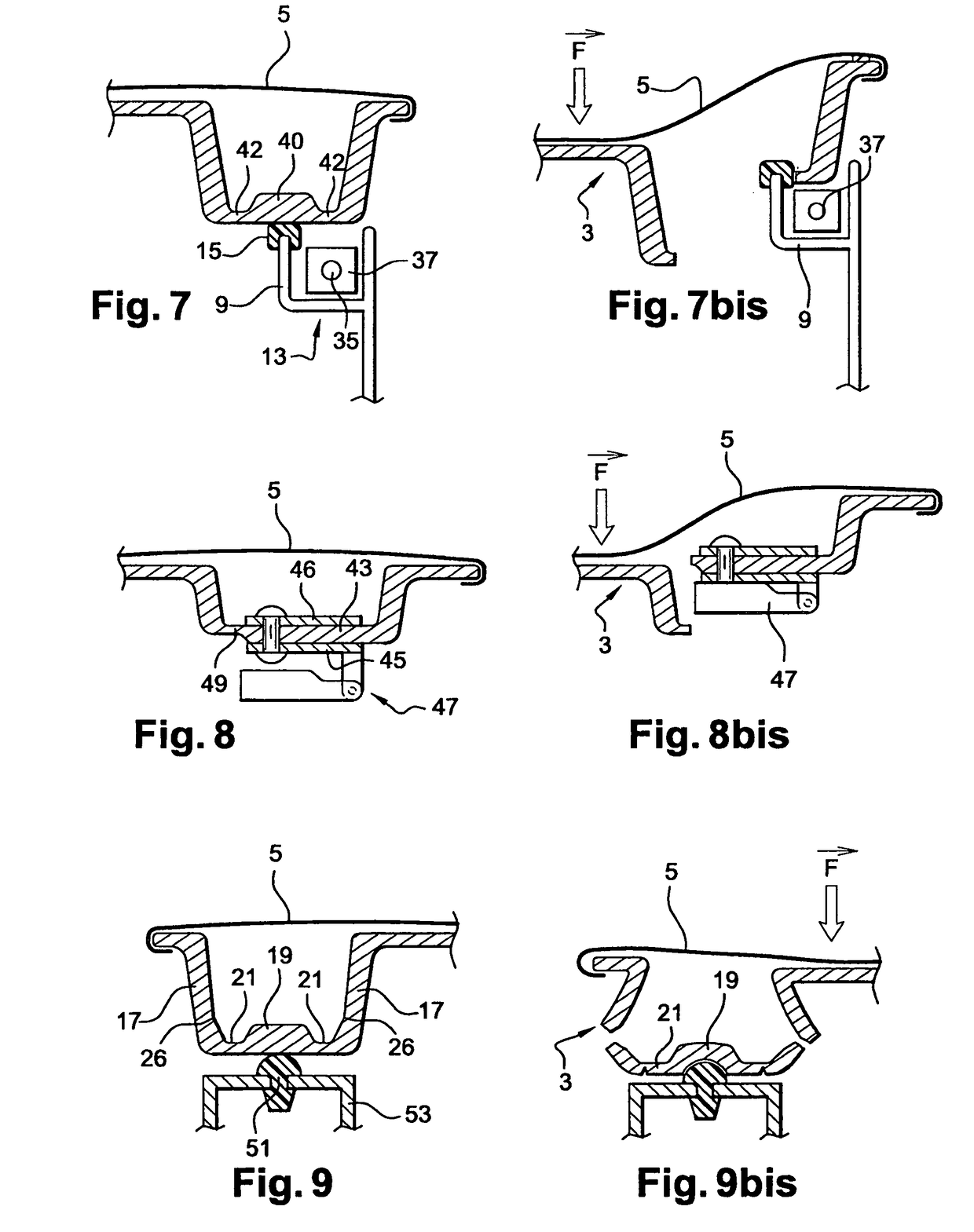Lining for the hood of an automotive vehicle and combinations thereof with certain parts of the vehicle
a technology for automotive vehicles and hoods, applied in vehicle bodies, monocoque constructions, vehicle maintenance, etc., can solve the problems of poor characteristics of the peripheral zone of the hood in the face of pedestrian impacts, degrade the hic, and the pedestrian's head can suffer severe injuries, so as to avoid flattening the hollow body, increase the stroke available for the pedestrian's head, and facilitate the effect of fabricating the weak zon
- Summary
- Abstract
- Description
- Claims
- Application Information
AI Technical Summary
Benefits of technology
Problems solved by technology
Method used
Image
Examples
Embodiment Construction
[0063]FIG. 1 shows a motor vehicle hood 1 seen from above, the front of the hood being at the bottom of the figure, while the rear of the hood is at the top.
[0064]Dashed lines are used to draw the outline of a hollow body formed by a lining 3 under a peripheral zone 5 (only part visible) of the hood 1. The lining is made at least in part out of a plastics material, in particular a composite material, such as sheet molding compound (SMC) or advanced molding compound (AMC).
[0065]This hollow body extends substantially along the rear edge 7 of the hood and has two lateral returns 3a and 3b. It follows the shape of a sheet metal flange 9 represented by a chain-dotted line, forming part of the structure of the vehicle. At the rear of the hood, the sheet metal flange 9 forms part of a radiator tank formed by a scuttle partition 11 carried by a dash panel 10 between the engine compartment and the passenger compartment, as can be seen in FIG. 2, whereas along the sides of the hood, i.e. in r...
PUM
 Login to View More
Login to View More Abstract
Description
Claims
Application Information
 Login to View More
Login to View More - R&D
- Intellectual Property
- Life Sciences
- Materials
- Tech Scout
- Unparalleled Data Quality
- Higher Quality Content
- 60% Fewer Hallucinations
Browse by: Latest US Patents, China's latest patents, Technical Efficacy Thesaurus, Application Domain, Technology Topic, Popular Technical Reports.
© 2025 PatSnap. All rights reserved.Legal|Privacy policy|Modern Slavery Act Transparency Statement|Sitemap|About US| Contact US: help@patsnap.com



